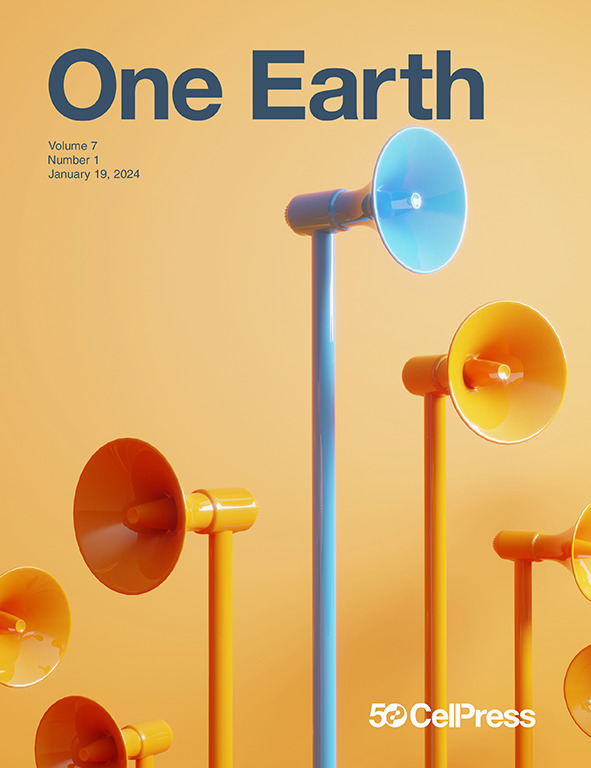将 "人类世 "定义为一个地质时代,可捕捉到人类影响的三重性,从而增强科学和行动的能力
IF 15.3
1区 环境科学与生态学
Q1 ENVIRONMENTAL SCIENCES
引用次数: 0
摘要
从 20 世纪中期开始定义人类纪,可以在国际地质时代尺度中体现人类对环境影响的三重性。这一时代反映了人类目前对地球的重要性,而全新世和晚更新世则代表了影响加剧的早期阶段。这一正式框架赋予科学和行动以地球管理的权力。本文章由计算机程序翻译,如有差异,请以英文原文为准。
Defining the Anthropocene as a geological epoch captures human impacts’ triphasic nature to empower science and action
Defining an Anthropocene epoch from the mid-1900s allows representing human environmental impacts’ triphasic nature within the International Geological Timescale. Such an epoch captures humanity’s current planetary importance, with the Holocene and Late Pleistocene representing earlier phases of intensifying impacts. This formal framework empowers science and action toward planetary stewardship.
求助全文
通过发布文献求助,成功后即可免费获取论文全文。
去求助
来源期刊

One Earth
Environmental Science-Environmental Science (all)
CiteScore
18.90
自引率
1.90%
发文量
159
期刊介绍:
One Earth, Cell Press' flagship sustainability journal, serves as a platform for high-quality research and perspectives that contribute to a deeper understanding and resolution of contemporary sustainability challenges. With monthly thematic issues, the journal aims to bridge gaps between natural, social, and applied sciences, along with the humanities. One Earth fosters the cross-pollination of ideas, inspiring transformative research to address the complexities of sustainability.
 求助内容:
求助内容: 应助结果提醒方式:
应助结果提醒方式:


